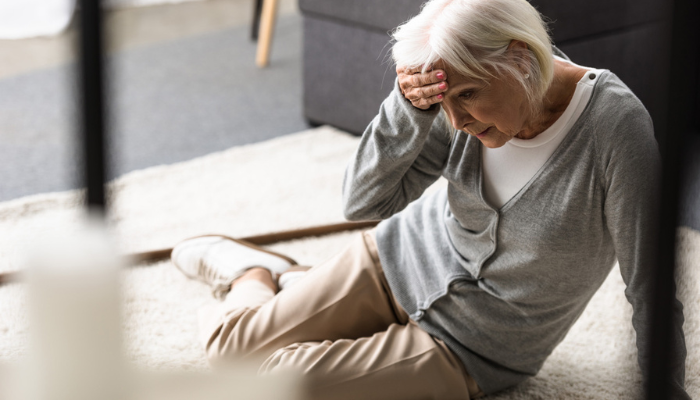
18 Jan Senior Safety: Key Fall Risk Interventions
The risk of falls becomes a significant concern as we age, posing potential threats to the health and independence of seniors. However, with proactive fall risk interventions, we can create a safer environment for our elderly loved ones. In this article, we’ll explore key strategies and interventions designed to reduce the risk of falls amongst the older generation and promote a more secure and confident lifestyle.
- Home Modifications: One of the first steps in fall risk interventions is making necessary modifications to the home environment. This includes installing handrails along staircases, adding grab bars in bathrooms, securing carpets, and providing adequate lighting throughout the house improving the overall safety of the living space, and reducing potential hazards.
- Regular Exercise Programs: Physical activity plays an important role in maintaining strength, balance, and flexibility. Implementing regular exercise programs tailored to seniors, such as gentle Yoga or Tai Chi, can significantly reduce the risk of falls. These activities focus on improving muscle tone and coordination, enhancing overall stability.
- Medication Management: Certain medications may contribute to dizziness or impaired balance, increasing the risk of falls. Conducting a comprehensive medication review with healthcare professionals as part of fall risk interventions helps identify potential side effects or interactions. Modifications to medication plans can then be implemented to prioritize safety.
- Vision and Hearing Checks: Impaired vision and hearing can compromise a senior’s ability to detect environmental hazards. Routine eye and ear examinations play a vital role in fall-risk interventions. Taking corrective measures, such as updating prescriptions or using hearing aids, enhances sensory perception and diminishes the risk of falls.
- Footwear Assessment: The type of footwear seniors choose can impact their stability. Fall risk interventions should include regular assessments of footwear to ensure proper fit, support, and traction. Promoting the utilization of non-slip footwear, particularly in damp or slippery conditions, can substantially decrease the likelihood of falls.
- Nutrition and Hydration: A well-balanced diet and proper hydration contribute to overall health and strength. Addressing nutritional requirements in all risk interventions is crucial, ensuring seniors receive sufficient nutrients for bone health and muscle function. Dehydration can result in weakness and dizziness, emphasizing the equal importance of staying hydrated.
- Assistive Devices: For those with mobility challenges, the use of assistive devices like canes or walkers can be effective fall risk interventions. Ensuring proper fitting and regular maintenance of these devices improves their effectiveness in offering support and stability.
Implementing fall risk interventions is crucial for enhancing the safety and health of seniors. By addressing home modifications, exercise programs, medication management, sensory health, footwear, nutrition, and assistive devices, we can create an environment that empowers seniors to lead more confident and secure lives.


